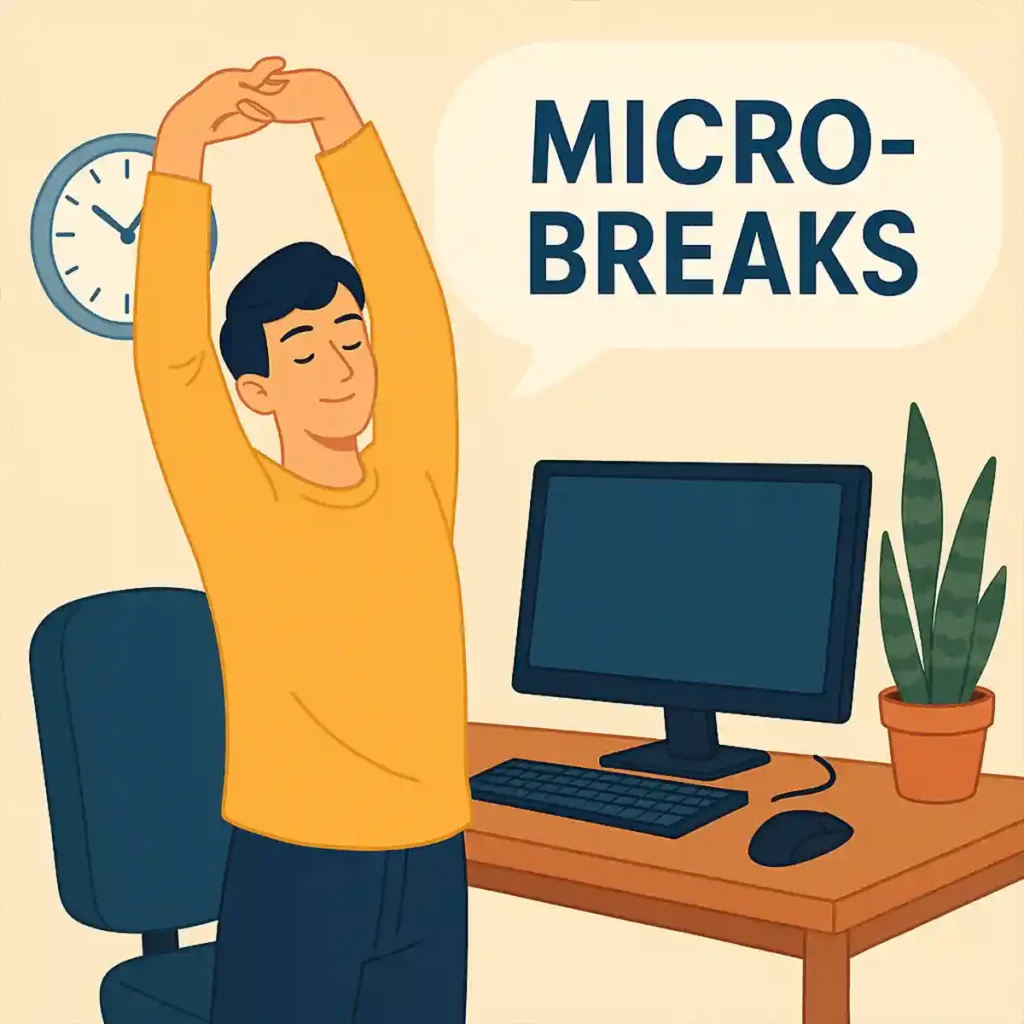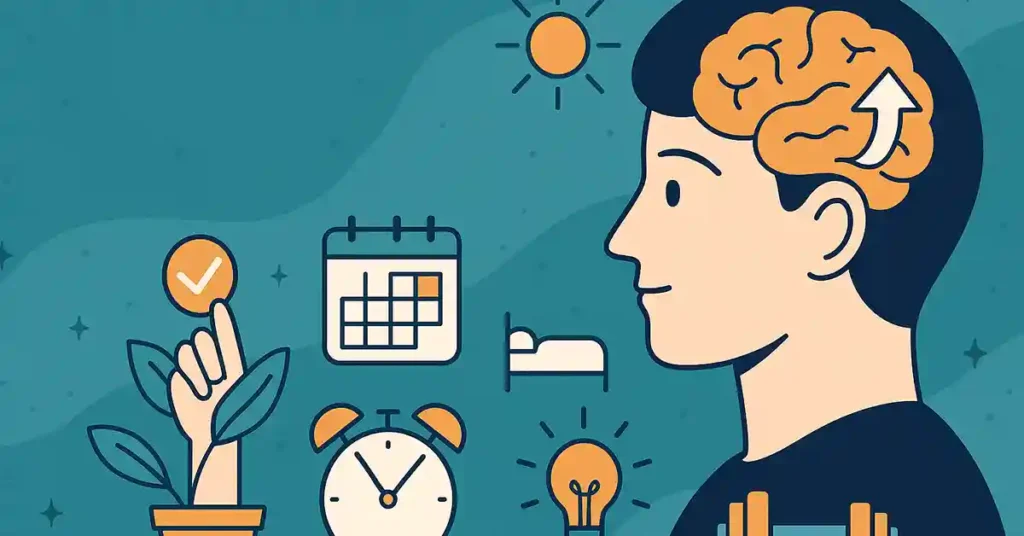Most people think being productive means cramming more into the day—longer hours, fewer breaks, more coffee. But research tells a different story. Scientists have been studying how our brains and bodies handle focus, decision-making, and fatigue, and the truth is both surprising and useful.
It turns out, we’re not wired to go full-speed all day. In fact, trying to “push through” often backfires. The real key to productivity is understanding how your brain and body actually work—and then building your day around that.
This article breaks down some of the most interesting research on productivity: what helps, what doesn’t, and how to apply it without overhauling your entire life. Let’s dive into what science has figured out—and how you can use it starting today.
The Laboratory Low‑Down (4‑Minute Nerd Dive)
Below is a speed‑reader’s tour of recent research that explains why certain habits work. Use it as your personal evidence vault.
Mental Fatigue & the Prefrontal Cortex
A 2025 systematic review found that long stretches of demanding mental work raise heart rate and blood pressure while dulling frontal‑lobe activity, the exact brain area you need for self‑control. (SpringerLink)
Why it matters: When your “brain CEO” tires, you slide into easier, impulsive choices.Chronotype (Lark vs. Owl)
A brand‑new 2025 review confirmed that people think faster and remember more during their own peak hours—morning for many larks, afternoon or evening for owls. (Taylor & Francis Online)
Why it matters: Scheduling tasks to match your biology can feel like gaining an extra brain.Ultradian Rhythms (~90‑Minute Waves)
Frontiers researchers showed that our energy rises and dips in 90‑ to 120‑minute metabolic cycles. (Frontiers)
Why it matters: Working in waves (then resting in troughs) keeps output high and burnout low.Micro‑Breaks
A meta‑analysis of “micro‑break” studies found that rests as short as 20 seconds every 7–10 minutes steady attention and reduce fatigue without harming performance. (PubMed Central)
Why it matters: Tiny pauses refresh focus before accuracy nosedives.10‑Minute Exercise Bursts
Healthcare workers who took a brisk walk or stretch break for just ten minutes sharpened executive function immediately afterward. (PubMed)
Why it matters: A hallway lap can reboot your brain faster than another coffee.Power Naps
A 2022–23 meta‑analysis of 54 studies shows that naps between 10 and 30 minutes lift vigilance, mood, and memory for up to four hours without grogginess. (PubMed Central)
Why it matters: They beat the afternoon slump without wrecking night‑time sleep.Dopamine & Micro‑Rewards
Recent work on dopamine‑neuron knockouts reveals that dopamine release isn’t crucial for movement but supercharges reward‑oriented behaviour—exactly what keeps you grinding through tasks. (PubMed)
Why it matters: Small wins (checking off a task, sharing progress) literally “juice” your motivation circuitry.Natural Daylight
Office studies link abundant daylight with better mood, sharper focus, and higher job satisfaction.
The Silent Guardian
A vow of silence. A mission across centuries. One assassin holds the fate of humanity in his hands.
Adam never chose to be silent; the Phylax demanded it. Trained from childhood as a time-traveling enforcer, he slips through centuries to eliminate those who threaten the future. His latest mission: assassinate Emperor Qin Shi Huang before a ruthless plot ultimately destroys humankind.
Turning Data into Daily Habits
Choose one or two items below, test them for a week, and track how much you finish — and how you feel while doing it.
Map Your Chrono‑Peaks – Keep a three‑day alertness log; schedule deep‑focus work in the green zones.
Ride the 90‑Minute Wave – Work for ~90 minutes, then take a five‑minute stretch, snack, or stare‑out‑the‑window break.
Micro‑Break Like a Pro – Every 25 minutes, stand up, roll your shoulders, or gaze at something green for 20 seconds.
Deploy a 10‑Minute Move – Do desk push‑ups, climb stairs, or dance poorly (but enthusiastically) between tasks.
Schedule a Power Nap – Aim for 15–25 minutes around 2 p.m.; set an alarm so you don’t drift past 30 minutes.
Reward Tiny Wins – Use a visible checklist or progress bar. Each tick delivers a mini dopamine hit.
Let There Be (Day)Light – Sit near a window, take calls outdoors, or use full‑spectrum bulbs in your desk lamp.
Guard the Night Shift – Stick to 7–9 hours of sleep; no amount of hacks replaces a rested brain.

Quick‑Fire FAQ
Is “ego depletion” debunked?
The glucose‑drain story is shaky, but neural fatigue of the prefrontal cortex is real. See the systematic review above. (SpringerLink)Do blue‑light‑blocking glasses help?
They can reduce eye strain at night, but broad‑spectrum daylight during daytime is more beneficial for circadian alignment. (PubMed Central)I’m a night owl in a 9‑to‑5 job—any hope?
Morning bright‑light therapy and short exercise bursts can shift your alertness curve earlier; even a partial shift boosts performance. (Taylor & Francis Online)
Takeaway Cheat‑Sheet
Match tough tasks to your biological peak.
Work in 90‑minute focus waves.
Take micro‑breaks before your brain begs for mercy.
Move for ten minutes to reset executive function.
Use a 15‑ to 25‑minute power nap to crush the mid‑afternoon slump.
Celebrate tiny wins—dopamine is your productivity wingman.
Bathe your workspace in daylight (or the best artificial light you can get).
Protect your nightly sleep like it’s a VIP meeting with tomorrow’s success.






